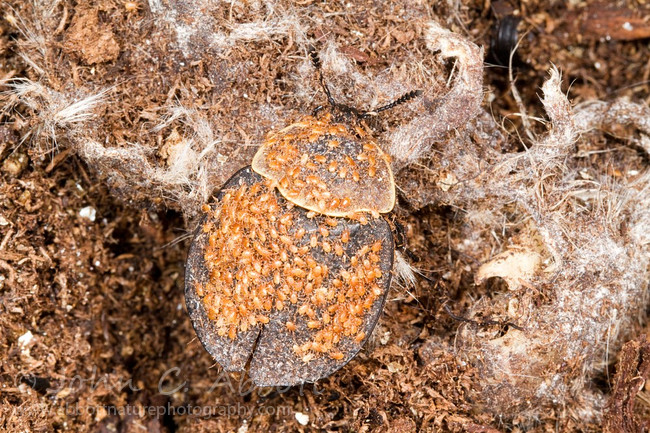
Interactions
Interactions with other species
The American carrion beetle is
known to participate in a commensal relationship with mites (mainly
Poecilochirus sp.). The mites attach to the adult beetle, which then
transports the mites by either flight or walking to an active food
source. The mites then detach from the beetle and feed on the
carcass. Without the beetle, the mites would be very limited on the
distance they could travel to feed. Also, besides just eating the
carcass, the mites reproduce at the feeding site utilizing the
carcass as an immediate food source for its young, similar to how
the American carrion beetle uses a dead animal carcass for
reproduction. The mites do not only feed on the carcass but also on
the fly eggs just like the beetle. This allows for more food for the
young of both the beetle and the mites, however in large densities
the mites have been known to feed on the beetle larva as well
(Gibbs and Stanton, 2001).
Above: The above photo is of an American carrion beetle covered in mites. The mites and the beetle have developed a commensal relationship.
Interactions with humans
Carrion beetles in general are a
very significant group of decomposers. They prevent a buildup of
dead organisms from gathering and play a significant role in
clearing the landscape of dead organic matter.
Also, Coleoptera in general have
an important role in forensics. Beetles can be of great help in
determining the post-mortem interval by the amount of a specific
species that has gathered on a human. Also by knowing the amount of
time it takes for the eggs of a specific beetle to hatch and being
able to determine the maturity of the larva can be another important
tool to determine the time of death of an individual
(Schubeck and Blank, 1982).
